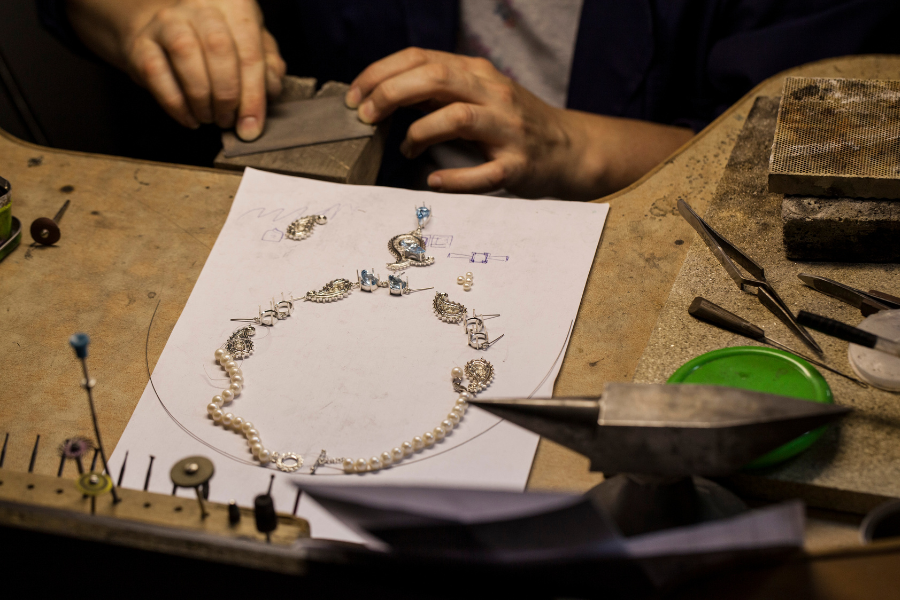Leading Jewelry Manufacturer: A Glimpse Into Excellence
The jewelry industry is a dazzling world of creativity, precision, and craftsmanship. Among the countless players in this space, leading jewelry manufacturers set the standard for innovation, quality, and artistry. These manufacturers play a crucial role in shaping trends, catering to diverse markets, and maintaining high ethical and environmental standards. Their influence extends beyond aesthetics, making a significant impact on the global economy and cultural heritage. This article explores the essential attributes, contributions, and future prospects of leading jewelry manufacturers.
Craftsmanship and Innovation
At the heart of any leading jewelry manufacturer lies exceptional craftsmanship. The art of jewelry-making requires a blend of tradition and technology, which these manufacturers balance seamlessly. Whether working with precious metals like gold, platinum, and silver or incorporating diamonds, gemstones, and pearls, their creations reflect meticulous attention to detail. Innovation further defines these manufacturers. Advanced techniques such as Computer-Aided Design (CAD) and 3D printing have revolutionized jewelry design and production, enabling intricate and bespoke pieces that were once unimaginable. These technological advancements have made it possible to cater to a broad spectrum of tastes and preferences, ensuring customer satisfaction and market adaptability.
Global Reach and Market Leadership
Leading jewelry manufacturers possess an extensive global presence, catering to diverse markets and cultures. They are often headquartered in key jewelry hubs such as Italy, India, the United States, and Hong Kong while operating in international markets through strategic partnerships and retail outlets. Their ability to understand and adapt to regional preferences is a hallmark of their success. For example, a manufacturer may focus on bold, colorful designs for Middle Eastern customers while emphasizing minimalistic and contemporary styles for European consumers. This adaptability ensures their relevance across the globe. Market leadership is also defined by their ability to set trends. Many leading jewelry manufacturers collaborate with top designers and celebrities to create iconic collections. These collaborations often lead to the creation of timeless pieces that set benchmarks for the industry.
Commitment to Sustainability and Ethical Practices
In recent years, sustainability has become a crucial factor for leading jewelry manufacturers. Consumers are increasingly concerned about the environmental and ethical implications of their purchases, prompting manufacturers to adopt responsible practices.
Top manufacturers ensure the ethical sourcing of materials, adhering to strict guidelines such as the Kimberley Process for conflict-free diamonds. Many also incorporate recycled metals and gemstones, reducing their environmental footprint while maintaining product quality. Furthermore, these manufacturers invest in fair labor practices, supporting artisanal miners and craftsmen in developing countries. Their commitment to transparency and accountability fosters trust and loyalty among consumers.
Investment in Branding and Consumer Experience
Leading jewelry manufacturers understand the significance of branding and consumer experience. They invest heavily in marketing strategies that highlight the exclusivity and elegance of their products. From iconic advertisements to collaborations with renowned influencers, their branding efforts create an aspirational appeal. Equally important is the in-store and online shopping experience. High-end showrooms often offer personalized services, including private consultations, custom designs, and lifetime maintenance programs. For digital-savvy consumers, manufacturers provide user-friendly e-commerce platforms with virtual try-on tools, detailed product descriptions, and secure payment options. These efforts not only enhance customer satisfaction but also strengthen brand loyalty, ensuring repeat business and word-of-mouth referrals.
Challenges and Resilience
Despite their success, leading jewelry manufacturers face numerous challenges. Fluctuating metal and gemstone prices, changing consumer preferences, and economic uncertainties can impact their operations. Additionally, the rise of counterfeit jewelry and unregulated online marketplaces poses threats to brand reputation and customer trust. However, their resilience lies in their ability to adapt and innovate. By embracing digital transformation, investing in research and development, and staying ahead of trends, they continue to overcome challenges and maintain their leadership position.
The Role in Cultural Preservation
Jewelry is deeply intertwined with cultural heritage, and leading manufacturers play a vital role in preserving and celebrating this legacy. Many of their designs are inspired by traditional motifs, techniques, and craftsmanship, ensuring these elements are passed down through generations. For example, some manufacturers revive ancient jewelry-making methods, such as enamel work or filigree, integrating them into modern designs. By doing so, they create pieces that resonate with cultural significance while appealing to contemporary tastes.
Future Prospects of the Jewelry Industry
The future of the jewelry industry is bright, with leading manufacturers poised to drive its growth and evolution. As consumer demand for personalization increases, these manufacturers are expected to expand their customization options, leveraging technology to create unique and meaningful pieces. Sustainability will remain a key focus, with manufacturers continuing to innovate in eco-friendly materials and practices. Additionally, the rise of lab-grown diamonds and synthetic gemstones offers new opportunities for affordability and sustainability without compromising on quality. The integration of technology will further enhance customer experience. Virtual reality showrooms, augmented reality tools for virtual fittings, and blockchain for transparent sourcing are just a few innovations on the horizon.
Conclusion
Leading jewelry manufacturers are the backbone of the industry, combining artistry, innovation, and ethics to create timeless pieces that captivate and inspire. Their ability to adapt to changing trends and consumer expectations while maintaining a commitment to quality and sustainability ensures their enduring success. As they continue to push boundaries and explore new possibilities, these manufacturers not only shape the future of jewelry but also enrich cultural heritage and empower communities worldwide. Their journey is a testament to the enduring allure and significance of jewelry in human history.







